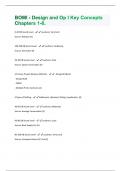BOMI -Design and Op I Key Concepts Chapters 1 -8. 0-20 DB Sound Level - Loudness: Very Faint Source: Whisper (5) 100-200 DB Sound Level - Loudness: Deafening Source: Generator (5) 20-40 DB Sound Level - Loudness: Faint Source: Quiet Conversation (5) 4 Primary Project Delivery Methods - - Design Bid Build - Design Build - CMAR - Multiple Prime Contracts (2) 4 Types of Shifting - Settlement, Upheaval, Sliding, Liquefaction. (4) 40-60 DB Sound Level - Loudness: Moderate Source: Average Conversation (5) 60-80 DB Sound Level - Loudness: Loud Source: Roof Supply Fan (5) 80-100 DB Sound Level - Loudness: Very Loud Source: Computer Room A/C Unit (5) Access Tile System - Similar to the concealed grid system (8) Acoustical Performance of Partitions - Sound transmission measured by STC rating which indicates how sound travels through materials or assemblies. (7) Actual Change - A change that the owner or his agent has actually ordered. No disagreement. (2) ADA Alterations - Based on ADA Act of 1990. Includes changes or rearrangement in structural parts or elements and changes or rearrangement in the plan configurations of walls and full height partitions. (1) Advantages of Metal Framing - Lightweight, uniform dimensions, noncombustible, resistant to moisture and rot, easy to construct, doesn't twist, has pre - punched holes, is pre - engineered. (7) Advantages of Precast Concrete - Less labor per unit because of mechanized production, cheaper and unskilled factory labor, reduced construction time, better quality control and higher concrete strength, greater independence of construction from weather conditions. (4) Advantages of Steel - High Strength, Uniformity, Elasticity, Permanence, Ductility, Additions to Existing Structure, Etc. (4) Air Infiltration - Causes unwanted drafts, burdens the HVAC system, and allows entry of outside air pollutants. (5) Aluminum - Soft, nonmagnetic, and corrosion resistant silvery metal with a low melting point and high thermal and electrical conductivity. Lightweight. Resistant to corrosion. (3) Aluminum Windows - Used in all types of construction. Should be insulated fro all incompatible materials. Problems: corrode, are difficult to refinish, and have poor heat flow resistance. (5) Architectural Program - Created during the design phase to accommodate the functional program. Establishes the size and general character of the proposed building. Used to evaluate project documents. (1) Auto -ignition - The bursting into flame of a material without a source of igniton. (7 Backed Vinyl - Vinyl wear layer that is bonded to a backing material. (8) Batts - Similar in form to blankets but shorter in length. Come with a vapor barrier and are made for installation between wall studs and roof joists. (3) Bedding - Layer of mortar on which the masonry unit is set. The first layer or mortar at the bottom of the masonry wall. (3) Benefit of Design - Bid- Build Method - Achieves the owner's goals with reasonable speed and costs. (2) Benefit of Design - Build Method - Combines the design and construction phases; encourages collaboration. (2) Benefits of CMAR Method - Integrated efforts provide value - added expertise. (2) Benefits of Multiple Prime Contracts Method - Project admin manages the total project to complete on time and on budget. (2) Benefits of Performing Building Simulation - Reveal potential energy savings. Can give the property manager an inexpensive means to explore many different design options and HVAC systems. (5) Benefits of Single Ply Systems - Extremely flexible and have excellent low - temperature properties. (6) Benefits of Terrazzo Flooring - Durable and economical. Attractive appearance, natural sheen, easy maintenance, and used exclusively in high - traffic area. (8) Best Practices in Installing Flooring - Adhesives should be nontoxic. Carpet should be off - gassed in a manufacturer's warehouse prior to shipment. (8) Binder - The glue that combines the pigment and solvents and allows for surface adhesion. (7) Blanket Insulation - Manufactured in the form of a mat. Made from fibrous material such as mineral wool, wood fiber, cotton fiber, glass fiber, or animal hair. Made with a cover of brown paper or aluminum foil as a vapor barrier. (3) Brass - An alloy of copper and zinc. Varies in color according to how much zinc it contains. Stains in moist air. Mostly used in plumbing, heating, and a/c. (3) Brick - The oldest manufactured construction material. Expands and contracts under seasonal temperature changes. Walls should be properly constructed to allow accumulated moisture to pass to the exterior. (3) Bronze - Alloy of copper and tin. More resistant to corrosion than brass. (3) Build to Suit Development - Design and construction of a building to meet the specific needs of a user who is committed to the project. Can be owner occupied or a long - term lease. (1) Building Codes - Promote general safety by regulating the design and construction of the building's components. Each municipality adopts a model building code and adds amendments to accommodate local conditions. (1) Building Envelope Design Considerations - Water infiltration, air infiltration, loads, thermal expansion and contraction, heat transfer, moisture migration, sound attenuation, building maintenance, and building codes. (5)




